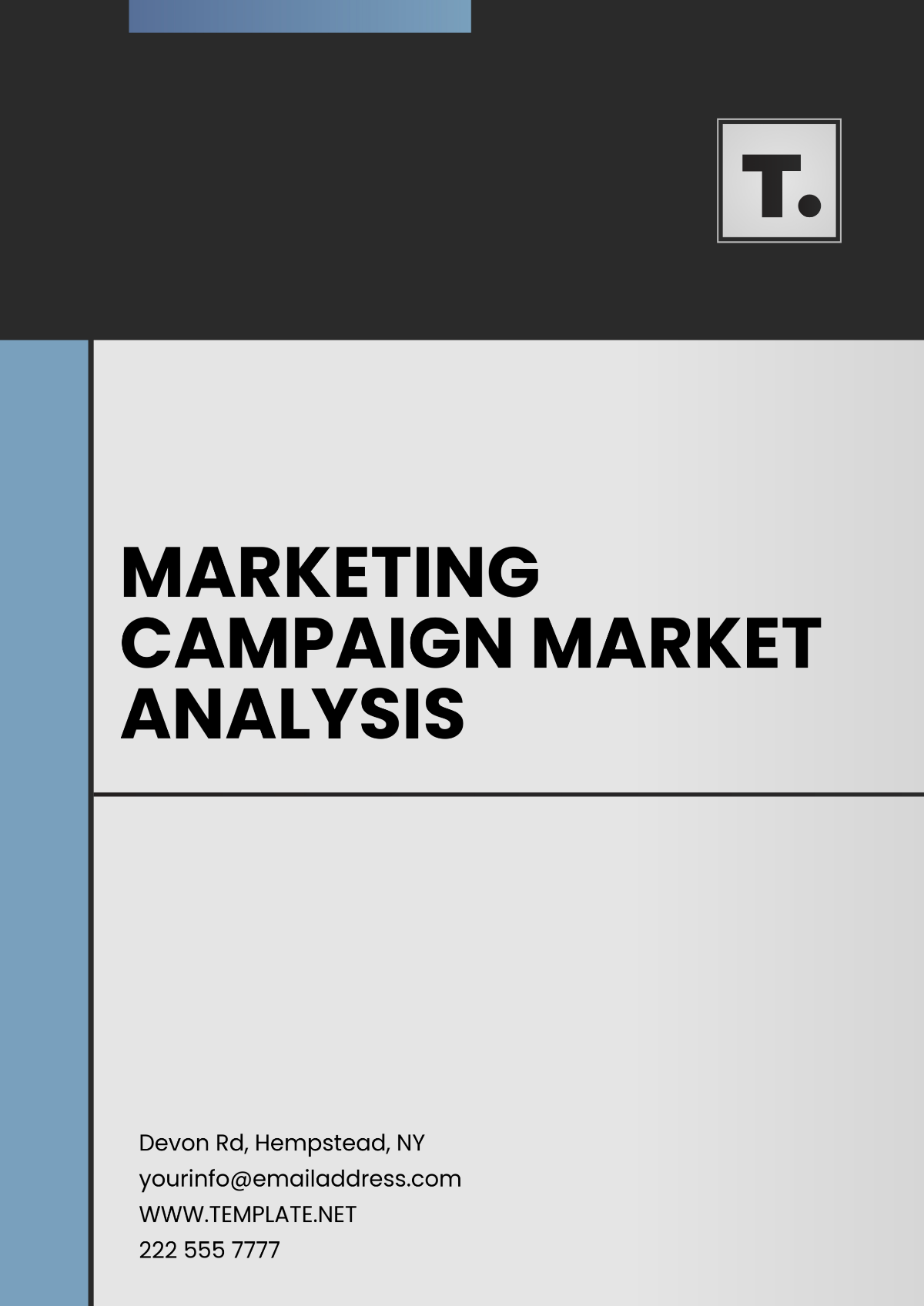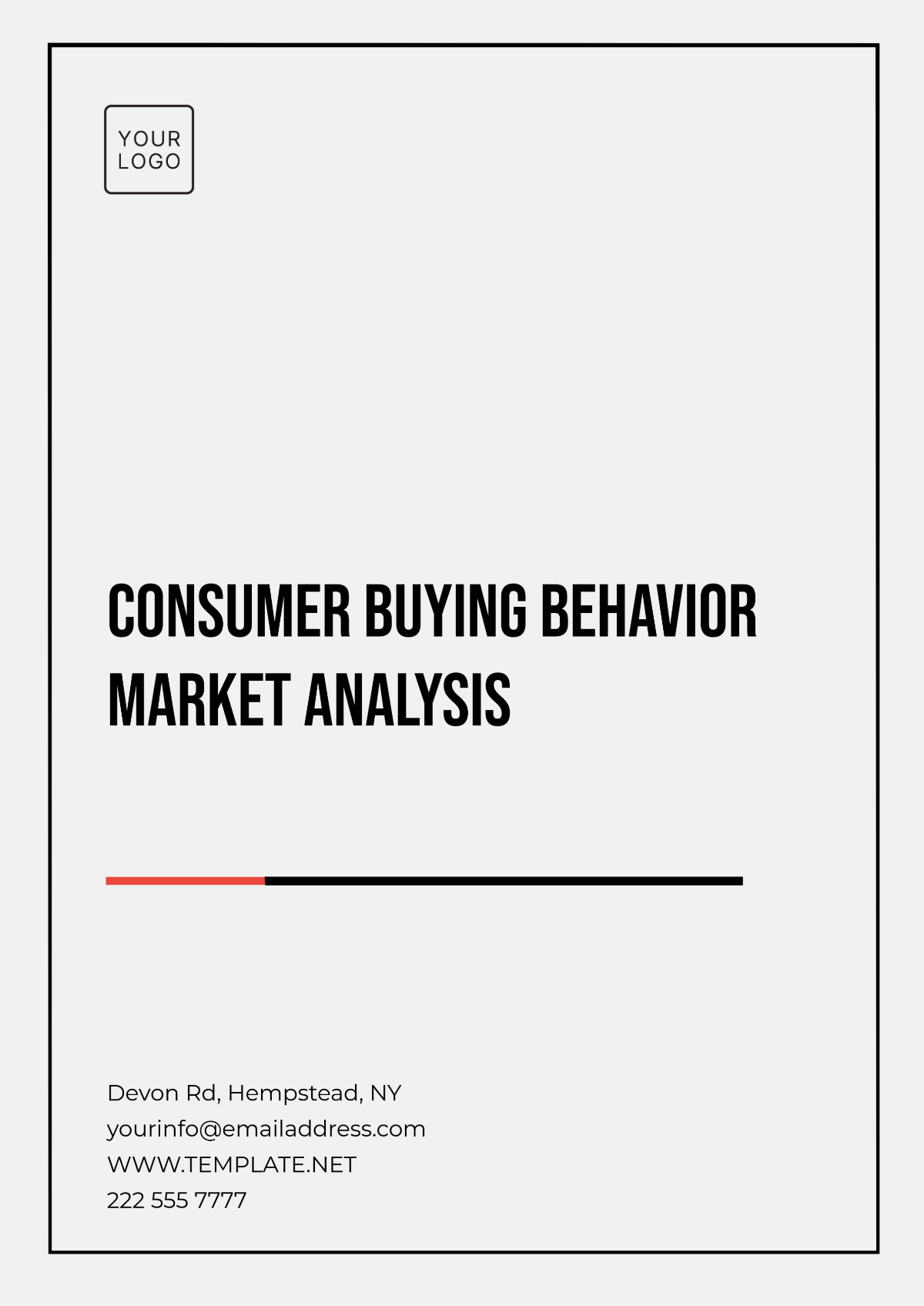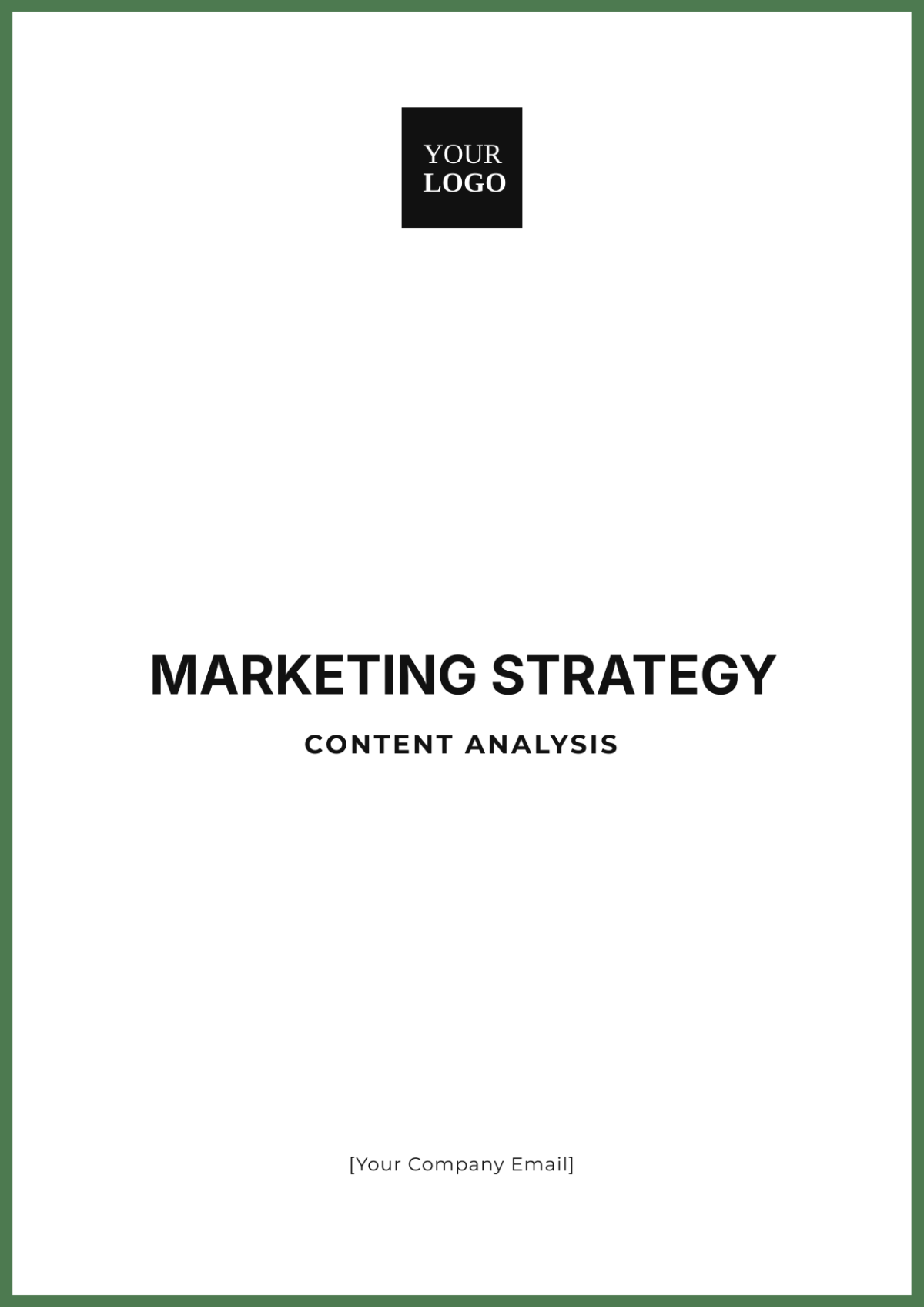Cafe Sales Analysis
1. Introduction
Welcome to the comprehensive Sales Analysis report for [Your Company Name] Cafe for the year 2050. This document provides an in-depth look into our sales performance, highlighting key areas of success and identifying opportunities for improvement. By examining various aspects of our sales data, we aim to develop actionable insights that will drive future growth and profitability.
2. Executive Summary
The year 2050 was a transformative period for [Your Company Name] Cafe, marked by significant milestones and substantial growth despite the numerous challenges encountered. This year, our cafe navigated an increasingly competitive market and evolving consumer preferences to achieve remarkable sales performance. This report provides a detailed examination of our sales performance across various product categories, customer segments, and promotional activities. Additionally, it offers strategic recommendations to further enhance our sales efforts moving forward.
Key Highlights
1. Total Annual Revenue Increased by 15% Compared to 2049
One of the most notable achievements of 2050 was the impressive 15% increase in total annual revenue compared to the previous year. This growth can be attributed to several strategic initiatives and improvements implemented throughout the year. The introduction of innovative menu items, enhanced marketing efforts, and improved operational efficiencies played pivotal roles in driving this revenue growth.
2. Significant Growth in Online Sales, Driven by Improved Digital Marketing Strategies
The shift towards digitalization has been a crucial factor in our success this year. Online sales experienced significant growth, a testament to the effectiveness of our revamped digital marketing strategies. By leveraging social media platforms, search engine optimization (SEO), and targeted online advertising, we were able to reach a broader audience and convert more leads into customers.
Social Media Engagement: Increased activity on social media platforms such as Instagram, Facebook, and Twitter allowed us to engage with customers more effectively. Regular posts, promotions, and interactive content helped in building a strong online presence.
SEO and Online Advertising: Investments in SEO and online advertising resulted in higher website traffic and better conversion rates. Our website saw a 25% increase in visitors, many of whom transitioned into loyal customers.
E-commerce Integration: The integration of a seamless online ordering system on our website facilitated easier and more convenient transactions, contributing to the overall growth in online sales.
3. Successful Introduction of New Menu Items, Contributing to a 10% Increase in Average Transaction Value
Introducing new and diverse menu items was a strategic move that paid off significantly. The new additions were carefully curated based on customer feedback and market trends, ensuring they resonated well with our clientele. These new offerings not only attracted new customers but also encouraged existing ones to try more items, thereby increasing the average transaction value by 10%.
Menu Diversity: The addition of vegan, gluten-free, and organic options catered to health-conscious consumers and those with dietary restrictions, broadening our customer base.
Seasonal Specials: Introducing seasonal specials such as winter-themed beverages and summer salads kept the menu exciting and dynamic, encouraging repeat visits.
Premium Offerings: Higher-priced, premium items such as specialty coffees and gourmet sandwiches contributed to the increased average transaction value, appealing to customers looking for unique and high-quality dining experiences.
Strategic Insights and Recommendations
Customer-Centric Approach
Our focus on understanding and meeting customer needs has been central to our success. Regular surveys, feedback forms, and direct interactions helped us stay attuned to customer preferences and expectations. Moving forward, maintaining this customer-centric approach will be vital. Implementing a robust feedback system to continuously gather and analyze customer input can further enhance our offerings and service quality.
Enhanced Operational Efficiency
Operational improvements, such as the implementation of advanced inventory management systems and streamlined workflow processes, have significantly reduced waste and improved efficiency. Continuing to invest in technology and training for staff will help sustain and build on these gains. Regular audits and process reviews can identify areas for further improvement and cost savings.
Marketing and Promotional Activities
Our marketing and promotional activities have been instrumental in driving sales growth. Expanding our digital marketing efforts to include new platforms and emerging technologies, such as augmented reality (AR) experiences and influencer collaborations, can attract even more customers. Additionally, local community engagement through events and partnerships can strengthen our brand presence and loyalty.
Product and Service Innovation
Constant innovation in our product and service offerings will keep [Your Company Name] Cafe ahead of the competition. Exploring new culinary trends, sourcing high-quality ingredients, and experimenting with unique recipes can keep the menu fresh and exciting. Offering exclusive, limited-time items and personalized dining experiences can also enhance customer satisfaction and loyalty.
Financial Management
Strong financial management practices have supported our growth. Continuing to monitor financial performance closely, maintaining stringent cost controls, and exploring new revenue streams, such as catering services or private event hosting, can further enhance profitability.
The year 2050 has been a period of growth and learning for [Your Company Name] Cafe. The strategies and initiatives implemented have set a solid foundation for continued success. By focusing on customer satisfaction, operational efficiency, innovative marketing, and financial prudence, we are well-positioned to achieve our goals and drive further growth in the coming years.
3. Sales Performance Overview
This section provides a high-level overview of our sales performance throughout 2050, focusing on monthly revenue, total sales, and average transaction values.
Monthly Revenue Breakdown
Month | Revenue | Percentage Change (MoM) |
|---|---|---|
January | $90,000 | |
February | $85,000 | -5.56% |
March | $95,000 | 11.76% |
April | $100,000 | 5.26% |
May | $105,000 | 5.00% |
June | $110,000 | 4.76% |
July | $115,000 | 4.55% |
August | $120,000 | 4.35% |
September | $125,000 | 4.17% |
October | $130,000 | 4.00% |
November | $135,000 | 3.85% |
December | $150,000 | 11.11% |
Total | $1,360,000 |
Average Transaction Value
Month | Average Transaction Value |
|---|---|
January | $12.50 |
February | $12.75 |
March | $13.00 |
April | $13.25 |
May | $13.50 |
June | $13.75 |
July | $14.00 |
August | $14.25 |
September | $14.50 |
October | $14.75 |
November | $15.00 |
December | $15.50 |
4. Revenue Analysis by Product
Understanding the performance of different product categories is crucial for optimizing our menu and inventory. This section breaks down revenue by product categories and highlights top-performing items.
Revenue by Product Category
Category | Revenue | Percentage of Total Sales |
|---|---|---|
Coffee and Beverages | $680,000 | 50% |
Pastries and Desserts | $340,000 | 25% |
Sandwiches and Salads | $240,000 | 18% |
Merchandise | $100,000 | 7% |
Total | $1,360,000 | 100% |
Top-Performing Items
Product | Revenue | Percentage of Category Sales |
|---|---|---|
Espresso | $200,000 | 29.41% |
Latte | $150,000 | 22.06% |
Cappuccino | $130,000 | 19.12% |
Croissant | $90,000 | 26.47% |
Cheesecake | $80,000 | 23.53% |
Turkey Sandwich | $70,000 | 29.17% |
Caesar Salad | $60,000 | 25.00% |
Branded Mugs | $40,000 | 40.00% |
Coffee Beans (Retail) | $30,000 | 30.00% |
5. Customer Analysis
Analyzing customer demographics and behavior helps us tailor our offerings and marketing strategies. This section provides insights into our customer base, purchasing habits, and preferences.
Customer Demographics
Demographic | Percentage of Customers |
|---|---|
Young Professionals | 40% |
Students | 25% |
Families | 20% |
Retirees | 10% |
Tourists | 5% |
Purchase Frequency
Frequency | Percentage of Customers |
|---|---|
Daily | 30% |
Weekly | 50% |
Monthly | 15% |
Occasionally | 5% |
Customer Feedback
Customer feedback is a valuable resource for improving our products and services. Here are some key insights from customer surveys conducted throughout 2050:
Positive Feedback:
High satisfaction with the quality of beverages and food items.
Appreciation for the cozy and welcoming atmosphere.
Positive remarks on the friendliness and professionalism of staff.
Areas for Improvement:
Suggestions for expanding the vegan and gluten-free menu options.
Requests for faster service during peak hours.
Desire for more seating space, especially during busy times.
6. Seasonal and Promotional Impact
Understanding the impact of seasonal trends and promotional activities on sales helps us plan effective campaigns. This section analyzes the performance of our seasonal offerings and promotional strategies.
Seasonal Sales Trends
Season | Revenue | Percentage Change |
|---|---|---|
Winter (Jan - Mar) | $270,000 | |
Spring (Apr - Jun) | $315,000 | +16.67% |
Summer (Jul - Sep) | $360,000 | +14.29% |
Fall (Oct - Dec) | $415,000 | +15.28% |
Promotional Campaigns
Campaign | Duration | Revenue Increase |
|---|---|---|
Valentine's Day Special | Feb 1 - Feb 14 | $20,000 |
Spring Refresh Menu Launch | Apr 1 - Apr 30 | $25,000 |
Summer Iced Drinks Promotion | Jul 1 - Jul 31 | $30,000 |
Holiday Season Special | Dec 1 - Dec 31 | $40,000 |
7. Comparative Analysis
Comparing our performance with industry benchmarks and competitors provides a clearer picture of our position in the market. This section highlights key comparative insights.
Industry Benchmark Comparison
Metric | [Your Company Name] | Industry Average |
|---|---|---|
Annual Revenue Growth | 15% | 12% |
Customer Satisfaction | 88% | 85% |
Average Transaction | $14.00 | $13.50 |
Competitive Analysis
Competitor | Strengths | Weaknesses |
|---|---|---|
Cafe A | Strong online presence, diverse menu | Higher prices, limited seating |
Cafe B | Excellent customer service, prime location | Inconsistent quality, limited hours |
Cafe C | Affordable prices, fast service | Limited menu, lack of specialty items |
8. Recommendations
Based on our analysis of the 2050 sales performance, we have identified several key areas for improvement that will enhance our overall sales strategy and operational efficiency. Implementing these recommendations will help [Your Company Name] Cafe continue to grow and meet the evolving needs of our customers.
Product and Menu Development
1. Expand Vegan and Gluten-Free Options
Rationale: Customer feedback has indicated a strong demand for more vegan and gluten-free menu items. Catering to health-conscious consumers and those with dietary restrictions can significantly broaden our customer base and enhance customer satisfaction.
Action Plan:
Market Research: Conduct thorough market research to identify popular vegan and gluten-free trends and recipes.
Supplier Partnerships: Establish partnerships with suppliers who specialize in high-quality vegan and gluten-free ingredients.
Menu Testing: Introduce a few new vegan and gluten-free items on a trial basis and gather customer feedback.
Marketing: Promote these new items through targeted marketing campaigns, emphasizing their health benefits and quality.
2. Seasonal Specials
Rationale: Seasonal specials have been a successful strategy in the past, driving sales and keeping the menu exciting for repeat customers. Leveraging popular seasonal flavors and trends can continue to attract and retain customers.
Action Plan:
Seasonal Planning: Develop a seasonal menu calendar with planned specials for each quarter.
Creative Development: Work with chefs and baristas to create innovative recipes that align with seasonal themes.
Customer Engagement: Involve customers in the process by allowing them to vote on or suggest seasonal specials through social media or in-store surveys.
Promotional Efforts: Launch dedicated marketing campaigns for each seasonal special, including limited-time offers and discounts.
Operational Improvements
1. Enhance Service Efficiency
Rationale: Reducing wait times during peak hours is crucial for maintaining high customer satisfaction and turnover rates. Optimizing staff schedules and streamlining order processing can significantly enhance service efficiency.
Action Plan:
Staff Scheduling: Use data analytics to identify peak hours and adjust staff schedules accordingly to ensure adequate coverage.
Training Programs: Implement regular training programs focused on efficiency and customer service skills.
Technology Integration: Invest in technology such as self-service kiosks and mobile ordering to reduce bottlenecks at the counter.
Process Optimization: Conduct regular reviews of operational processes to identify and eliminate inefficiencies.
2. Increase Seating Capacity
Rationale: Limited seating during busy periods can lead to lost sales and customer dissatisfaction. Expanding seating capacity, especially with outdoor areas, can accommodate more customers and enhance their experience.
Action Plan:
Space Utilization: Conduct a space utilization study to identify areas within the cafe that can be optimized for additional seating.
Outdoor Seating: Explore options for expanding outdoor seating, including obtaining necessary permits and investing in weather-appropriate furniture.
Flexible Layouts: Implement flexible seating arrangements that can be adjusted based on customer flow and event requirements.
Customer Comfort: Ensure that the expanded seating areas are comfortable and conducive to a pleasant dining experience.
Marketing and Promotions
1. Targeted Digital Marketing
Rationale: Leveraging data analytics to create targeted marketing campaigns can effectively reach specific customer segments, such as young professionals and students, thereby increasing engagement and sales.
Action Plan:
Customer Segmentation: Use data analytics to segment the customer base by demographics, preferences, and purchasing behavior.
Personalized Campaigns: Develop personalized marketing campaigns tailored to each segment, highlighting relevant products and offers.
Social Media Strategies: Enhance social media presence through regular posts, engaging content, and interactive features such as polls and live streams.
Email Marketing: Implement targeted email marketing campaigns with personalized offers and updates for different customer segments.
2. Loyalty Program Enhancements
Rationale: A well-designed loyalty program can encourage repeat visits and foster customer retention. Revamping our loyalty program to offer more attractive rewards and incentives can enhance customer loyalty.
Action Plan:
Program Redesign: Redesign the loyalty program to include tiered rewards, exclusive offers, and experiential rewards such as VIP events.
Customer Communication: Clearly communicate the benefits of the loyalty program through in-store signage, social media, and email campaigns.
Data Utilization: Use loyalty program data to track customer preferences and tailor offers accordingly.
Feedback Loop: Regularly gather feedback from loyalty program members to continuously improve the program and address any issues.
Customer Engagement
1. Feedback Integration
Rationale: Actively seeking and integrating customer feedback into business decisions ensures that we meet their evolving needs and preferences, ultimately enhancing customer satisfaction and loyalty.
Action Plan:
Feedback Channels: Establish multiple channels for collecting customer feedback, including online surveys, comment cards, and social media.
Regular Reviews: Conduct regular reviews of feedback data to identify common themes and areas for improvement.
Actionable Insights: Translate feedback into actionable insights and implement changes promptly.
Customer Communication: Keep customers informed about the changes made based on their feedback to demonstrate that their opinions are valued.
2. Community Events
Rationale: Hosting community events and collaborating with local businesses can strengthen our brand presence, foster community engagement, and attract new customers.
Action Plan:
Event Planning: Plan and host a variety of community events such as live music nights, art exhibitions, and cooking workshops.
Local Partnerships: Partner with local businesses and artists to co-host events and promote each other’s offerings.
Promotion: Promote events through social media, local media outlets, and in-store advertising.
Customer Involvement: Encourage customer involvement by inviting them to participate in events and providing incentives such as discounts or freebies.
By implementing these recommendations, [Your Company Name] Cafe can enhance its sales strategy, improve operational efficiency, and foster deeper customer engagement. These strategic initiatives will not only address current challenges but also position the cafe for sustained growth and success in the future. The key to achieving these goals lies in our commitment to innovation, customer satisfaction, and continuous improvement.
9. Conclusion
The 2050 sales analysis for [Your Company Name] Cafe provides a comprehensive overview of our performance, highlighting areas of success and opportunities for improvement. By leveraging the insights gained from this analysis, we can make informed decisions to drive growth and enhance customer satisfaction. As we move into 2051, we are committed to implementing these recommendations to ensure continued success and profitability.
We thank our dedicated team and loyal customers for their support and look forward to an exciting year ahead. For any further information or queries, please contact us at [Your Company Email].
Prepared by:
[Your Name]
[Your Position]
[Your Company Name]

















































